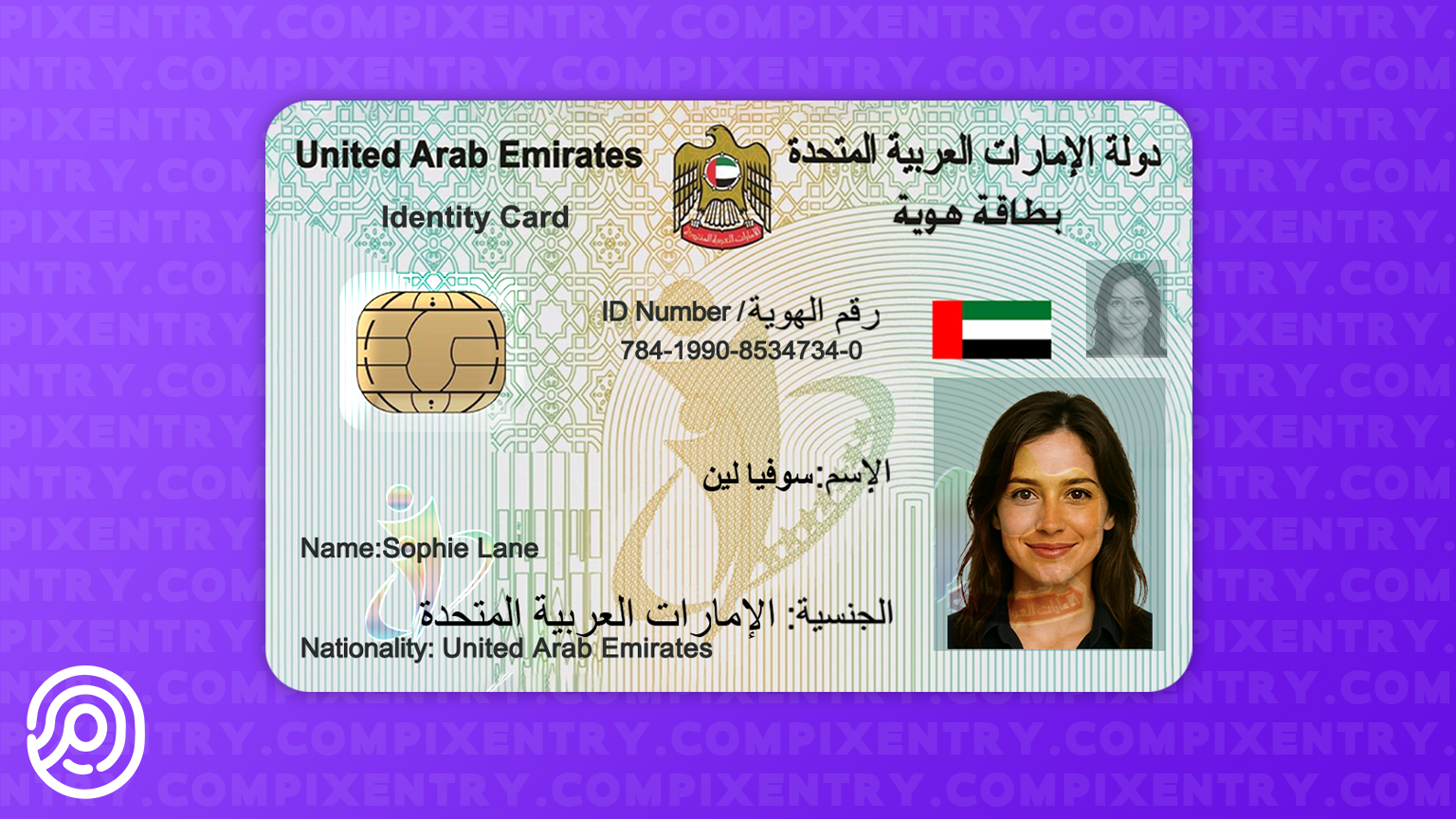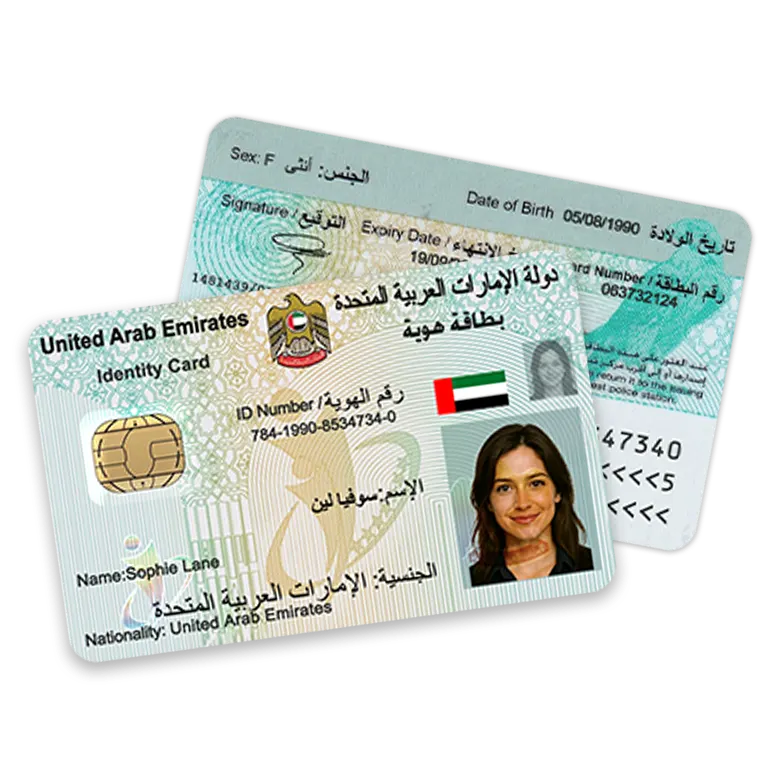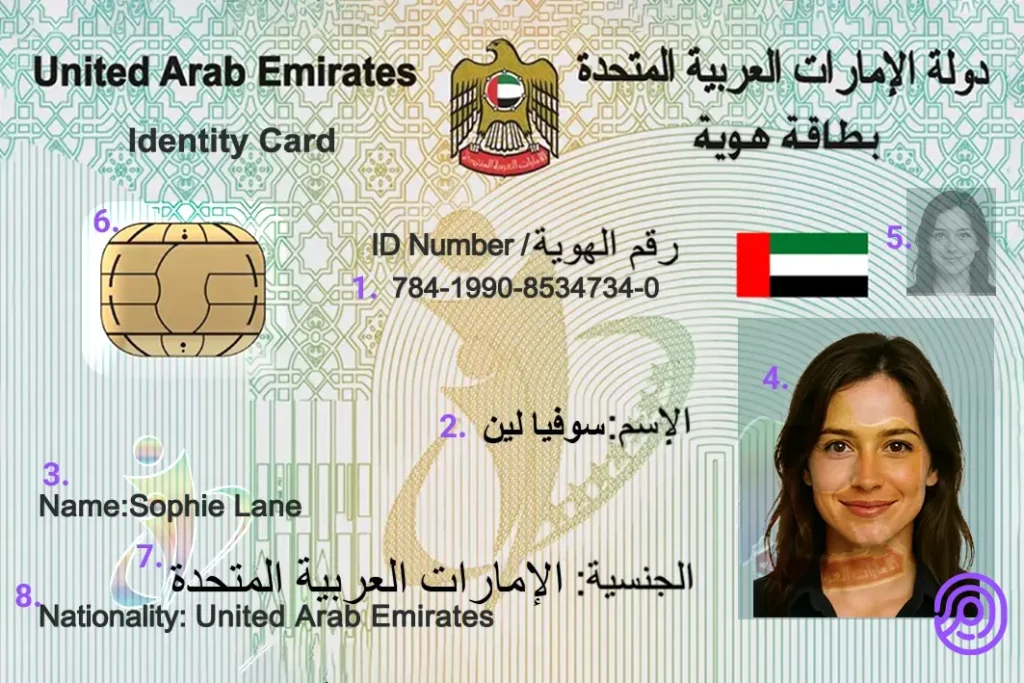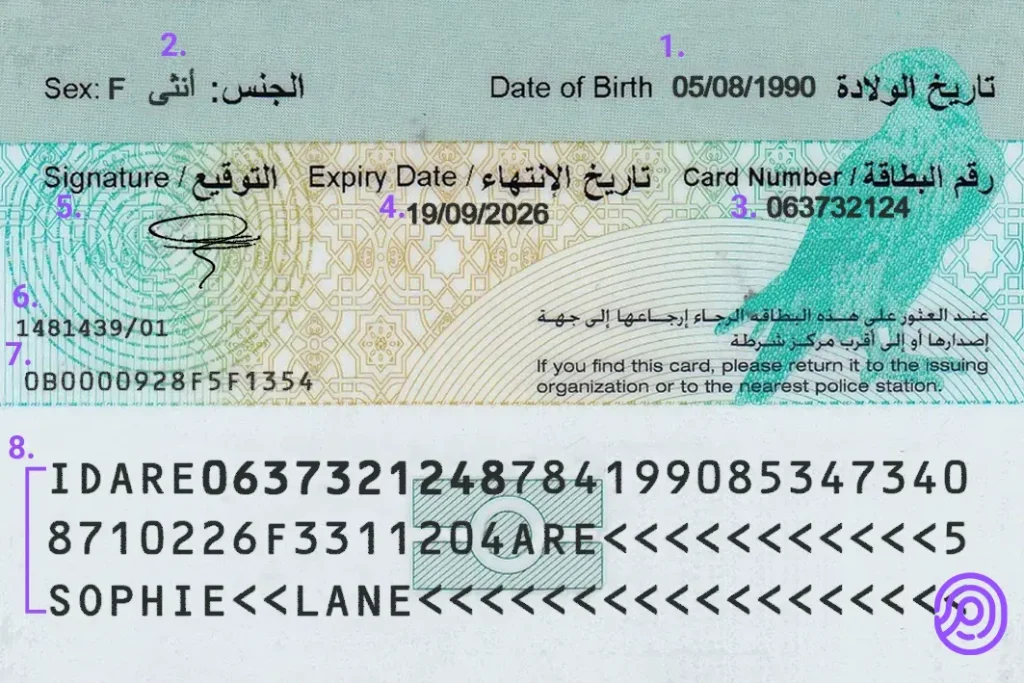Emirates ID Card

Introduction:
The Emirates ID card is one of the most advanced and secure identity documents in the Middle East, issued by the Federal Authority for Identity, Citizenship, Customs, and Port Security (ICP).
This card plays a very important role in identifying and managing the information of citizens and residents, and it is considered the main pillar of the country’s digital identity system.
The Emirates ID is not only used for official identity verification, but it is also used in many daily activities such as opening bank accounts, using electronic services, conducting government transactions, obtaining licenses, and even verifying identity in digital signatures and online systems.
In other words, this card serves as a bridge between individuals’ physical and digital identities in the UAE.

Structure of the Emirates ID Card
The Emirates ID card is made from high-durability multilayered polycarbonate. This structure makes the card resistant to heat, bending, pressure, moisture, and physical damage.
Inside the card, there is a smart chip that securely stores the holder’s sensitive information such as fingerprints, facial image, and other biometric data in an encrypted format.
The card’s dimensions follow the ISO/IEC 7810 standard, making it similar in size, thickness, and shape to international bank cards. Its light weight and resistance to water and environmental factors make the Emirates ID one of the most durable identity cards in the world.
Receiving this card is mandatory for all citizens and legal residents of the UAE. Depending on the type of residency or citizenship, the card is typically valid for 2 to 10 years and must be renewed upon expiration.
Appearance of the Front of the UAE ID Card
On the front of the card, the primary identity information of the cardholder is displayed. According to the image, this section includes the following:

- ID Number: A unique identification number issued by the UAE’s national registration system. This number plays a key role in all administrative and banking systems of the country.
- Full Name in Arabic: The official name of the individual, as registered with the UAE Identity Authority (ICA).
- Full Name in English: The official international translation of the individual’s name, used for travel, passports, and international communications.
- Color Photograph: The official photograph of the cardholder, used for facial matching in both in-person and digital identity verification processes.
- Ghost Image: A faint and semi-transparent image of the individual’s face placed in the background of the card, designed to prevent counterfeiting or unauthorized duplication.
- Smart Chip: An electronic component that stores the cardholder’s sensitive data and syncs with official government and banking systems.
- Nationality in Arabic: Indicates the cardholder’s nationality in the official language of the country (Arabic)
- Nationality in English: The Latin translation of the individual’s nationality for use in international centers and foreign systems.
As seen, the front of the card contains the most important identity and technical data needed for individual verification and identification
Appearance of the Back of the UAE Identity Card
On the back of the card, additional technical and identification information is displayed, which helps in more accurate identification, tracking card issuance, and interacting with databases

- Date of Birth (Gregorian Calendar): The exact date of birth, used for recording in official systems and matching with other documents.
- Gender (Male/Female) in Arabic and English: Indicates the gender of the cardholder in both languages for easier use domestically and internationally
- Card Number: A unique card number, distinct from the ID Number, used in administrative processes such as renewal, tracking, or reissuing the card.
- Expiration Date: The validity period of the card, which is determined based on the type of residency, typically ranging from 2 to 10 years, after which it needs to be renewed.
- Signature: The cardholder’s digital or printed signature for identity verification in official systems
- Undefined: This section is typically reserved for technical or security information
- Undefined: This may include encrypted data specific to the internal card issuance system
- MRZ (Machine Readable Zone): A machine-readable area that encodes the card information in ICAO standards, enabling automatic identification.
Due to global security policies and regulations, displaying or sharing specific data from this section is typically not allowed in public
Importance and Use of the Emirates ID Card
The Emirates ID is not just a simple identification card; it is a gateway to the digital world and smart government services.
All citizens and residents are required to have an active card to access services such as residency renewal, property registration, obtaining insurance, entering free zones, voting, banking services, and even performing digital signatures.
In other words, without the Emirates ID, access to many public and private services in the UAE is not possible.
Final Words
In this article, we have provided a complete and analytical review of the Emirates ID card.
You can obtain an editable Emirates ID card template from the Pixentry website and use it for design, practice, and educational projects.
The Emirates ID card is a prime example of modern smart identity systems that, through encryption technology, electronic chips, and biometric security, has become one of the most secure identity documents in the world.
This article is purely for informational purposes, to educate and inform about the design of identification cards.
All files and templates provided on the Pixentry website are for decorative, display, and educational purposes only.
The use of these cards as official documents or for any unauthorized activity is strictly prohibited, and any misuse is the sole responsibility of the user.
